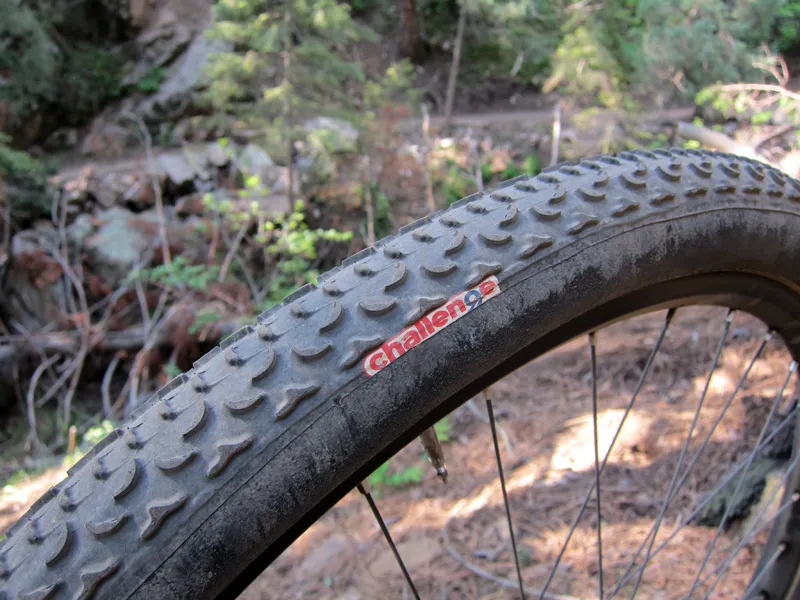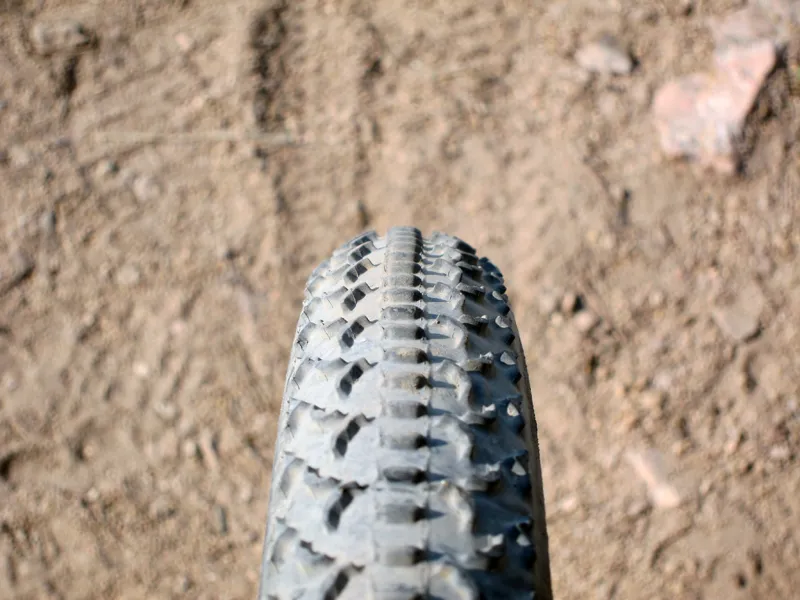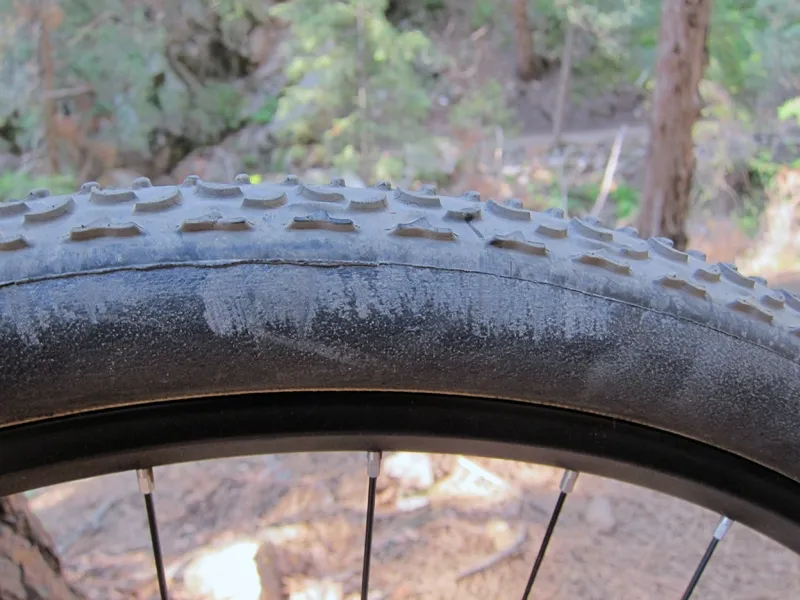Challenge's new MTB One 29 tubular tires offer a fast ride, ultra-supple feel and surprisingly decent grip. They're very expensive, though, at an estimated US$150, and will be impractical for the vast majority of riders, confining their appeal largely to pro racers.
Tubulars offer many of the same benefits for mountain biking as they do for cyclo-cross – potentially lighter system weights, the ability to run lower pressures for improved traction, and a supple ride, given their soft sidewalls and ultra-high thread count casings. What all this adds up to on the MTB One is speed.
The low-profile tread doesn't present much rolling resistance and the sidewalls easily conform to ground imperfections while eating up minimal energy in the process – both of which contribute to a noticeably fast roll well suited to racing applications. Those ultra-supple sidewalls also lend a buttery and springy ride quality that most top-end clinchers inflated to similar pressures can't match.
Speaking of which, we were able to run lower pressures than usual, eventually settling on about 20psi up front and 23psi out back. Curiously, Challenge's recommended minimum pressure is 24psi – about the same as what we'd normally run in a tubeless tire of similar volume anyway. Regardless, grip is impressive on hardpack and softer dirt considering the modest tread. However, the knob pattern won't suit every cornering style.
The MTB One's minimal blocks are rather flexy despite their low height and mostly situated on the crown so there isn't much to dig into the ground if you really lean it over. The lower pressure allows the 51mm-wide casing to flex substantially, so there's more of that crown tread still on the ground. The tire also slides very predictably and consistently. But it has a fairly vague feeling underfoot that some riders might not like, especially if they're used to the new crop of wider clincher rims that boast stouter sidewall support.
Challenge owner and tire developer Alex Brauns insists this feel is intentional – the casing has been designed to play a bigger role than most mountain bikers are used to, reflecting the company's European roots and strong background in cyclo-cross. "The knobs are designed with fewer or no sharp edges but the form compensates to optimize the grip," he told BikeRadar.
"[It's] not like motorcycle tires, where as you lean you increase the contact patch. Here, you ride constantly on the same contact patch and the casing distorts. [European riders] like to feel the bike swing and skid around the corner but this is done with extreme control of the bike. They use a few fingers to grip the handlebar to control the bike in a very fluent, soft way, to come out of the curve as smooth and fast as possible. US riders tend to enter the curve like a motocross bike – hard, lean the bike and then accelerate out."
We can't comment on the weight of our test tires since they came pre-glued to Velocity Major Tom aluminum tubulars but Challenge claim 580g for the 2in (51mm) MTB One. That's certainly light but not remarkably so and several race-specific clinchers are about the same weight – if not lighter in some instances – and don't carry with them the hassle of gluing.
That being said, the real weight savings come in the whole system – specifically, if the tire is paired with a carbon tubular rim. DT Swiss's XRC 950T 29ers, for example, are quoted at just 1,200g a set and the combination would make for a truly ultralight setup that doesn't resort to a flexy aluminum hoop. However, weight savings like that will cost you a pretty penny and with the tire being glued to the rim, it isn't easy to quickly swap treads for different course conditions.
We didn't suffer any punctures during testing – though we bottomed out the tires on more than one occasion – but if our experience with 'cross tubies is any indication, most smaller punctures should be fairly easily repaired by injecting some sealant. All-in-one sealant/inflators like Vittoria's Pit Stop should work well, too, though as always, there's no guarantee.
All of Challenge's tubulars are fully hand built and while the separately bonded-on tread makes for a more supple tire than a conventional vulcanized tire, our samples still arrived with a range of disconcerting imperfections. Our test tires were 3-5mm out of round, the tread had a variety of lateral wiggles in it, and there were also a number of wrinkles on the outer edges.
Brauns says our tires were early samples produced before proper factory tooling was installed and we'll give him the benefit of the doubt as Challenge's 'cross tubulars are generally much higher quality. That being said, we've noticed some tread imperfections in the past and as with any hand-glued tire, there's always a risk that the edges will come unbonded from the casing.
Overall, the Challenge MTB One 29 tubulars are very fast, they grip better than expected, and with the right wheel combination they can be incredibly light, making them an enticing choice for cross-country racers looking for every possible edge. But the unavoidable drawbacks associated with them – eg. race-day tread changes require multiple wheelsets – will still limit them to a very narrow niche.
,





